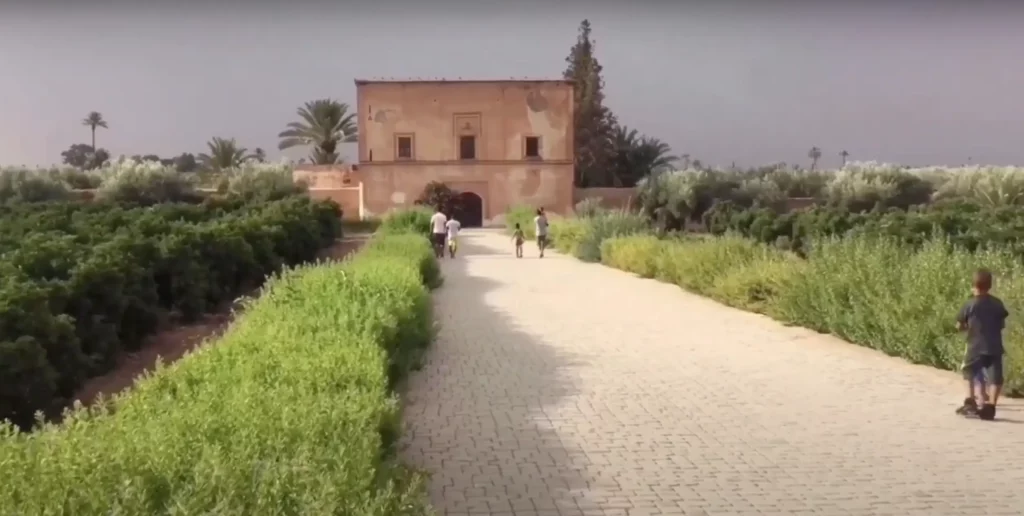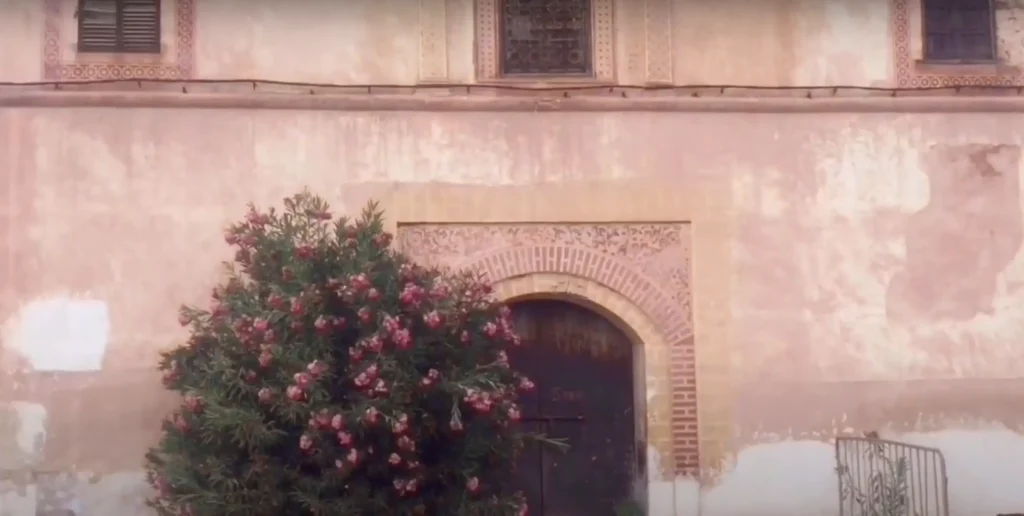The Agdal Gardens stand as a testament to the city’s rich history and architectural prowess. This vast expanse of gardens and orchards, coupled with its historic reservoirs and palaces, offers a serene escape from the bustling city life. Recognized as a UNESCO World Heritage Site, the Agdal Gardens are a must-visit for any traveler seeking a blend of history, nature, and architecture.
The Origin and Historical Significance:
The Name ‘Agdal’:
Derived from the Tamazight (Berber) language, ‘Agdal’ translates to a “walled meadow” or a summer pasture. This term is not unique to Marrakesh but is also used to describe similar walled parks and gardens in other Moroccan cities like Fez, Meknes, and Rabat.

The Almohad Legacy:
The tradition of establishing gardens outside the city began with the Almoravids, the founders of Marrakesh. However, the Agdal Gardens, as we know them today, were a creation of the Almohads. The Dar al-Hana reservoir, the garden’s most prominent water body, dates back to this era.
The Saadian Renewal:
The Saadian dynasty, which ruled in the 16th and 17th centuries, played a pivotal role in the architectural renaissance of the Agdal Gardens. Under their reign, the gardens underwent significant enhancements, with a focus on expanding the water systems and introducing new plant species. The Saadians, known for their architectural prowess, also added ornate structures and pavilions, blending Andalusian and Persian garden aesthetics. Their influence transformed the gardens into a space of luxury and leisure, frequented by royalty and nobility.
The Alaouite Period:
The Alaouite dynasty, which succeeded the Saadians, continued the legacy of garden development. While they maintained the core structures introduced by the Saadians, the Alaouites introduced their unique architectural flair. The Dar al-Bayda Palace’s expansions during this period are a testament to their commitment to preserving and enhancing the gardens. The Alaouites also focused on strengthening the irrigation systems, ensuring the gardens remained lush and verdant throughout the year. Their reign saw the gardens evolve into a harmonious blend of function and aesthetics, making it the architectural marvel it is today.
Exploring Agdal Gardens
While it might be challenging to find your way in, the journey is part of the adventure. The gate is miles from the centre of town and you walk past most of the so-called garden before getting to it
Architectural Marvels within the Gardens
The Dar al-Hana Pavilion:
Overlooking the grand reservoir, the Dar al-Hana pavilion has witnessed multiple reconstructions over the centuries. The current structure, a blend of historical and modern architecture, was redesigned in the late 20th century.
The Dar al-Bayda Palace:
This palace complex, with its three distinct courtyards, stands as a reflection of the architectural evolution of the gardens. The palace has seen expansions and renovations, with the most notable ones being during the Alaouite period.
A Botanical Paradise:
The Agdal Gardens are not just about history and architecture. They are a living testament to Morocco’s rich agricultural heritage. From olive and orange trees to pomegranates, elderberries, and jasmine, the gardens are home to a diverse range of flora. The meticulous irrigation system, with its network of channels and ditches, ensures that these plants thrive throughout the year.

Tips for Tourists:
Best Time to Visit:
To experience the gardens in all their glory, consider visiting during the spring or autumn months when the weather is pleasant, and the flora is in full bloom.
Guided Tours:
Opt for a guided tour to gain deeper insights into the history, architecture, and botanical significance of the gardens
Don’t Miss:
While the entire garden is a treat for the senses, ensure you don’t miss the Dar al-Hana Pavilion, the Dar al-Bayda Palace, and the vast reservoirs that have historical significance.
What to Bring
Remember to bring a hat, sunscreen, and water as you explore. The Moroccan sun can be quite intense.
The Agdal Gardens are a symbol of Marrakesh’s rich history, architectural brilliance, and commitment to preserving nature.
A visit to Marrakech would not be complete without exploring the historic Agdal Gardens. Soak in its rich history, wander through its vast orchards, and let this hidden gem in Marrakech transport you back in time.

